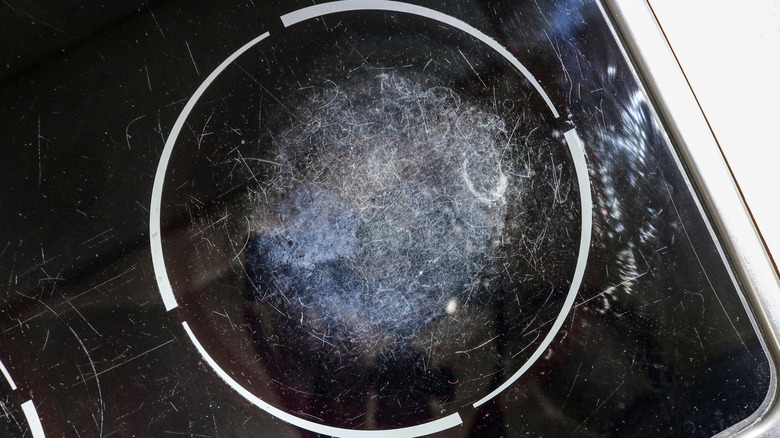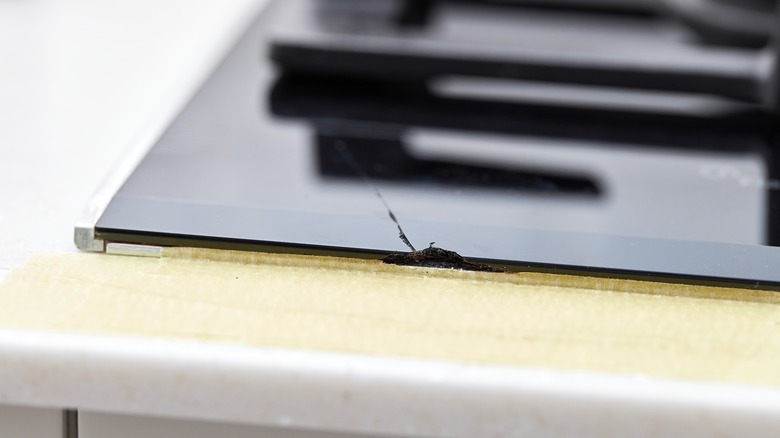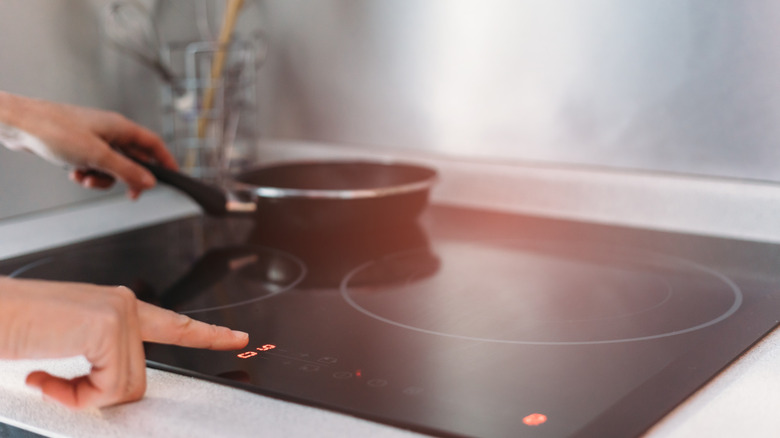How Damaged Can An Induction Cooktop Get Before It Needs To Be Replaced?
If you have an induction cooktop, you're probably familiar with the pros and cons of an induction range. Induction cooktops are great because they heat up quickly, have easily controlled temperatures, and are simple to clean. Unlike typical stoves which have a heating element, induction stoves use electromagnetism to heat pots and pans, rather than the stovetop itself. This helps keep cooking fast, but the smooth glass stovetop can be susceptible to damage over time. Whether you are an avid home chef or reluctant to even boil water, it's normal for scratches and fine lines to appear on an induction cooktop with regular use. While these cooktops are designed to last over a decade with proper care, if you accidentally cause too much damage to the cooktop, it may need to be replaced sooner.
If your cooktop is starting to look a little worse for wear, you may need to consider replacing it because cooking on a damaged glass cooktop can be dangerous. When a crack reaches all the way through a glass cooktop, there is potential for water or other substances to get inside and become a fire or electrical hazard. If the damage is limited to small scratches, though, then you should be able to safely use the cooktop for a while longer. Just keep an eye on any scratches to ensure they do not worsen over time. To make sure your cooktop is safe, you need to know how to tell the severity of a crack or scratch and the risk of using an overly damaged induction cooktop.
Why is a cracked induction cooktop dangerous?
If you are worried about the safety of your induction cooktop, your first step should be to turn off the stove and examine the damage while considering possible causes. To determine if a damaged area is a crack or a scratch, lightly move your fingernail across the mark while the stove is completely cool. If the cooktop is cracked, then you might feel your nail catch. If your nail runs smoothly over the mark, then it is likely just a scratch. While scratches are mostly just a cosmetic issue, cracks can be dangerous. Cracks often occur when something is dropped on the cooktop, such as a knife or a heavy pot. They can also be a result of thermal stress, like leaving a pot boiling too hot for too long, or extreme temperature shifts, like applying a hot pot to the cold stove. Scratches are usually caused by using rough pots and pans, sliding things around, rolling crumbs, and abrasive cleaning products. Your memory of how and when the mark happened could help you determine the extent of the damage.
If you believe you are dealing with a crack, then you should turn off your induction cooktop and avoid using it until you get it replaced. Cracks can cause uneven heating, which can overheat parts of your cookware and risk a fire. Additionally, flammable debris or grease could enter the cracks and catch fire, or water could seep in and cause electrical damage to the unit or electrical shocks that could be harmful. If the damage is just scratches, then the induction cooktop should be safe for normal use.
Replacing the damaged surface with a new induction cooktop
While striving to repair items rather than replace them is usually a good mentality, it's not always worthwhile in the case of a cracked induction cooktop. Cracks in an induction cooktop cannot be repaired. Instead, you will have to replace the glass or buy a new cooktop. Induction cooktops start at around $950. For easy installation, you can purchase a replacement cooktop that is the same size and power as your previous one and install it according to the instruction manual's directions. However, you should call a licensed professional electrician to finalize everything.
With the high cost of replacing an induction cooktop, it is important to know how to properly care for it and prevent damage. Follow the simple rules that keep an induction cooktop cleaner than ever, such as avoiding abrasive cleaners and tools that can scratch the surface, and only using gentle force when scrubbing. Check the bottoms of your pots and pans and make sure that they are clean and smooth before using them on the cooktop. If needed, you can revive burnt pots and pans with a common household item so that there is no debris on the bases that could make scratches more likely. Cracks are chips are common accidents, but you can avoid using especially large or heavy pots and be mindful of sudden temperature changes. Finally, avoid placing hot pans on a cold cooktop or vice versa, which can cause thermal stress.


